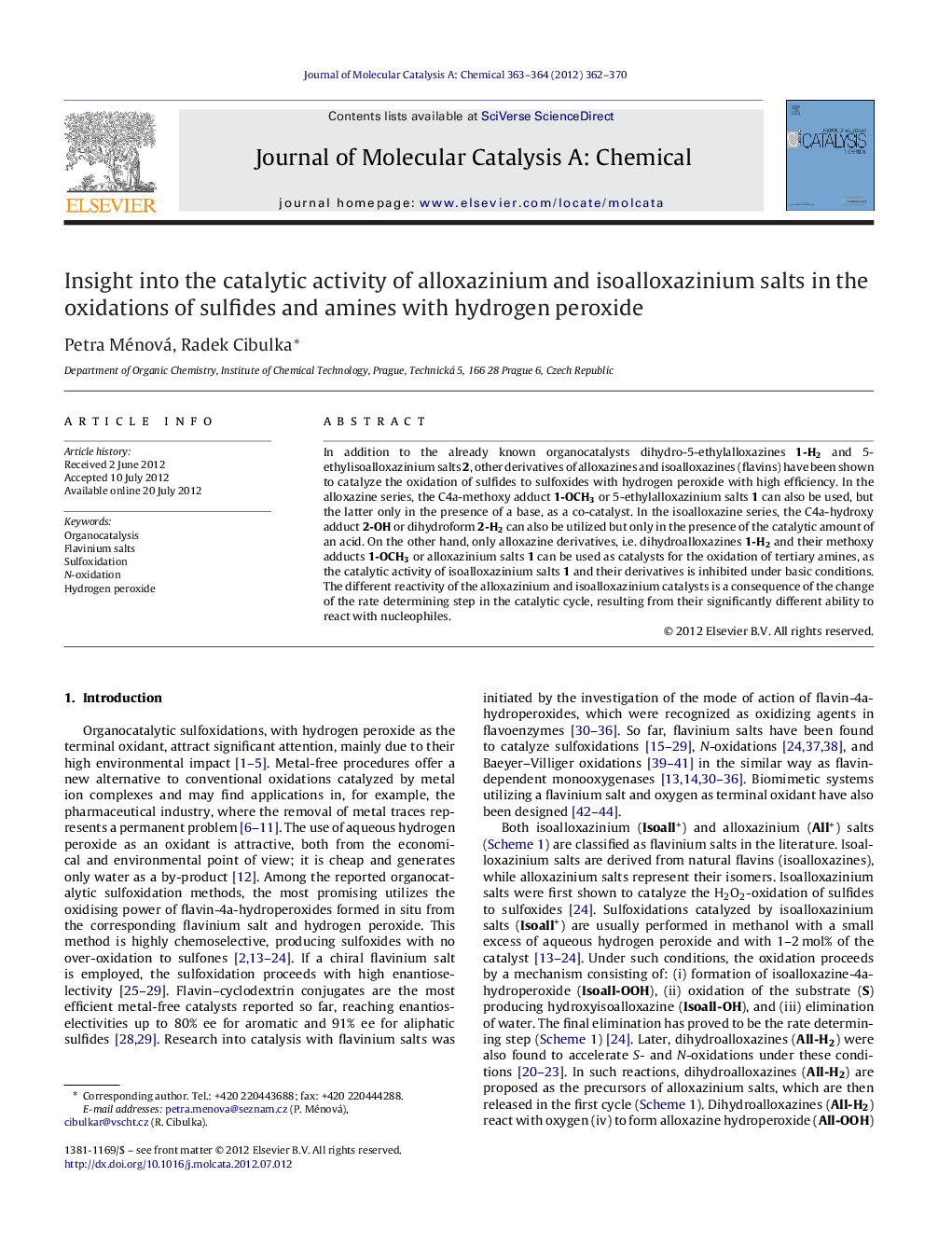| Article ID | Journal | Published Year | Pages | File Type |
|---|---|---|---|---|
| 66048 | Journal of Molecular Catalysis A: Chemical | 2012 | 9 Pages |
In addition to the already known organocatalysts dihydro-5-ethylalloxazines 1-H2 and 5-ethylisoalloxazinium salts 2, other derivatives of alloxazines and isoalloxazines (flavins) have been shown to catalyze the oxidation of sulfides to sulfoxides with hydrogen peroxide with high efficiency. In the alloxazine series, the C4a-methoxy adduct 1-OCH3 or 5-ethylalloxazinium salts 1 can also be used, but the latter only in the presence of a base, as a co-catalyst. In the isoalloxazine series, the C4a-hydroxy adduct 2-OH or dihydroform 2-H2 can also be utilized but only in the presence of the catalytic amount of an acid. On the other hand, only alloxazine derivatives, i.e. dihydroalloxazines 1-H2 and their methoxy adducts 1-OCH3 or alloxazinium salts 1 can be used as catalysts for the oxidation of tertiary amines, as the catalytic activity of isoalloxazinium salts 1 and their derivatives is inhibited under basic conditions. The different reactivity of the alloxazinium and isoalloxazinium catalysts is a consequence of the change of the rate determining step in the catalytic cycle, resulting from their significantly different ability to react with nucleophiles.
Graphical abstractFigure optionsDownload full-size imageDownload high-quality image (191 K)Download as PowerPoint slideHighlights► C4a-adducts of isoalloxazinium and alloxazinium salts catalyze sulfoxidations. ► Alloxazinium and isoalloxazinium salts strongly differ in their catalytic activity. ► Alloxazines should be catalysts of choice for the oxidations of tertiary amines. ► Non-reactive forms of flavins can be activated by a base or an acid.
